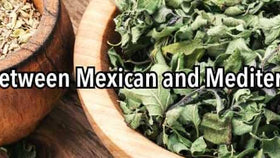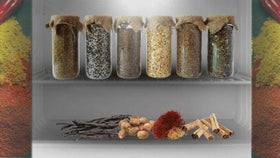How to Dye With Saffron
There are two main reasons saffron is utilized as an ingredient in recipes:
-
It contributes a unique flavor that can’t be reproduced by any other ingredient.
It is earthy and somewhat sweet, with floral notes and flavors reminiscent of the nuances of nectar and fresh-cut grass. Honestly, though, saffron has a distinct flavor profile that is unlike any other ingredient, so fully describing its essence to someone who has never had the pleasure of trying it presents quite a challenge.
-
Saffron contributes aesthetic appeal to dishes it is added to.
Although the saffron threads themselves boast several shades of red and orange that tend to range from rust to crimson, they infuse hues of yellow and gold into the dishes they are added to.
Saffron need not be limited to transforming the aesthetic of culinary dishes, however. It has long been used as a natural dye for threads and fabrics. Yes, the results are breathtaking, but with saffron fetching such a steep price, you’ll want to ensure you are doing it correctly. In this article, we are going to unveil the steps to dying fabric with saffron.
Using Food to Dye Fabric:
Create a Vibrant Yellow Naturally with Saffron
There are many ingredients that are capable of spanning the culinary and crafting world, from onions and cabbage to beets and saffron, and beyond. We chose to dye with saffron because we love the vibrant yellow hue it contributes.
Here's how we achieved it.
Part One: Prepare Your Fabric
- For your fabric, you are going to want to choose a piece that is white and has preferably not been bleached to become white.
- Mix together 1 part non-iodized sea salt with 12 parts water in a large pot. You’ll need just enough to cover and submerge the fabric in water. The salt will help the fabric absorb the dye.
- Bring the water to a low-boil until the salt is fully absorbed.
- Remove from the heat and submerge your fabric. Place a lid on the pot and let it continue to soak for about 30 minutes.
Part Two: Prepare Your Dye
- In a second pot, simmer saffron threads in enough water to submerge your fabric. Start with a couple of teaspoons and add more until your water has turned a bright yellow.
- Use a large spoon (not wooden unless you don’t mind dying it) or stick to frequently stir to help the saffron threads release more color.
- Stir in 1 teaspoon of white vinegar for every 2 cups of water.
- When you get to the point when color is no longer being released from the saffron, strain through a fine sieve to remove the stigmas.
- Return the liquid to the pot and continue to simmer.
Part Three: Dye Your Fabric
- Drop your fabric in the pot of simmering water and natural dye.
- Ensure all of the areas of fabric are fully submerged to get even dying.
- Keep the fabric in the pot for a full hour, turning it every 10 minutes or so.
Part Four: Removing Excess Dye from Fabric
- After your fabric has been sitting in the dye for a full hour, pull it out of the water and ring it out.
- Run it under cold water, frequently ringing it out to remove the excess dye. Continue to do this until the water runs clear.
- Hang your fabric to dry, preferably not in the sun, as sun drying naturally “bleaches” or fades colors.
Important Care Tips for Your Saffron-Dyed Fabric
Now that you have a beautiful piece of hand-dyed fabric, you’ll want to ensure you care for it in the right way. There are some things you should keep in mind. Saffron, like other natural food dyes, is considered a fugitive dye, meaning it is not permanent. Even after it has set, it will fade when washed or exposed to too much light. In order to keep the brightness in your fabric, you may have to retreat your fabric every year or so (depending on how often it is washed).
It should also be noted that it is incredibly important to ensure your fabric has been well-rinsed until the water is absolutely running clear. Otherwise, there is a very good chance that the dye will bleed onto other things the fabric comes in contact with (including your own skin).







Slofoodgroup
Author